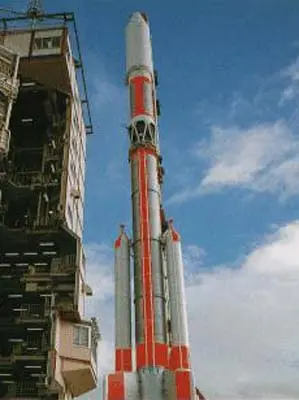/
Asuka
Launch Success
Liftoff Time (GMT)
02:20:00
Saturday February 20, 1993
Mission Details
Asuka
The objective of the ASCA, also called Asuka, was to perform spectroscopic X-Ray astronomy in the wavelength band 1-12 keV. with particular emphasis on spectroscopy of the iron K band. Another objective of ASCA was the imaging of the structure of extended sources such as clusters of galaxies and supernova remnants. ASCA carried four identical telescopes with a total effective area of 1300 cm² at 1 keV and 600 cm² at 6-7 keV. ASCA was a cooperative mission between Japan [ISAS] and NASA. NASA provided four conical grazing incidence, multilayer thin foil mirrors. Two CCD-based detectors were provided by MIT. Japan provided the imaging gas scintillation proportional counters (IGSPC), the spacecraft, the launch vehicle, and a ground station. In return for its scientific instrument contribution, NASA was allocated 15% of the observing time after the initial seven or eight-month Performance Verification (PV) period. In addition, 25% of the observing time was set aside for collaborative proposals between US and Japanese scientists. A solar flare on 14 July 2000 caused heating and expansion of the upper atmosphere which increased the drag and external torque on ASCA. The attitude was perturbed so the solar panels lost lock on the Sun, resulting in the discharge of the batteries and possible unrecoverable damage. ASCA is now flying in a free spin mode with a period of about 3 min and a nutation angle of about 40 degrees. The mission can only be commanded in real-time during daylight from KSC when the solar panels are directly powering the spacecraft. All observations have been cancelled and the odds of recovery are considered remote.
Low Earth Orbit
1 Payload
420 kilograms
Launch Site
Stats
Mu-III
18th
Mission
1st
Mission of 1993
Institute of Space and Aeronautical Science
22nd
Mission
1st
Mission of 1993
1993
11th
Orbital launch attempt

